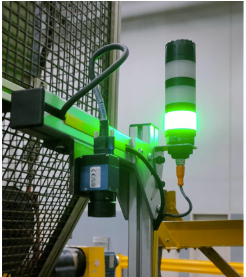Detect Steel or Textile Cord Breakage by Thermal Inspection
After the steel or textile reinforced rubber has been extruded, it passes under the CordSight Extrusion Thermal Inspection System. At this point, the system looks for missing cords, missing rubber and other extrusion defects. It can also predict tension abnormalities in individual cords. This system can save time and materials, as well as aid in the production of a higher-quality tire.

Detecting Missing Cords
The system detects missing steel or textile cords with infrared thermography to measure the surface temperature of the rubber. If a cord is missing, the heat distribution of the extruded strip will be uneven. When this happens, the temperature difference is detected by the CordSight Extrusion Thermal Inspection System. The thermal image is displayed on the operator interface, and the system can raise an alarm, or automatically stop the process to allow the defect to be addressed.
Detecting Cord Tension Abnormalities
Uneven heat distribution is also used to pinpoint cord tension abnormalities within the extruded strip. These are also highlighted on the operator interface and can generate an alarm, or an automatic stop of the process. By catching abnormalities while still in the production phase, the issues can be solved before the product reaches the tire building machine. This leads to a safer, higher-quality tire.
Detecting Extrusion Defects
The CordSight Extrusion Thermal Inspection System’s technology can also detect extrusion defects including missing rubber and uneven edge fill-out. All these defects can have a negative impact on the quality and performance of the tire, so it is crucial to catch and resolve any issues during production.
Contact Steelastic to learn more!
Improve the quality of your extrusion-based tire component production lines with a CordSight Extrusion Thermal Inspection System. Contact Steelastic today to learn more.


